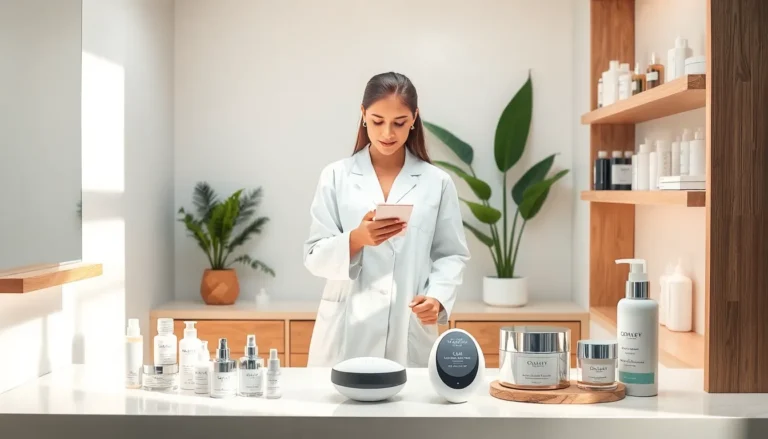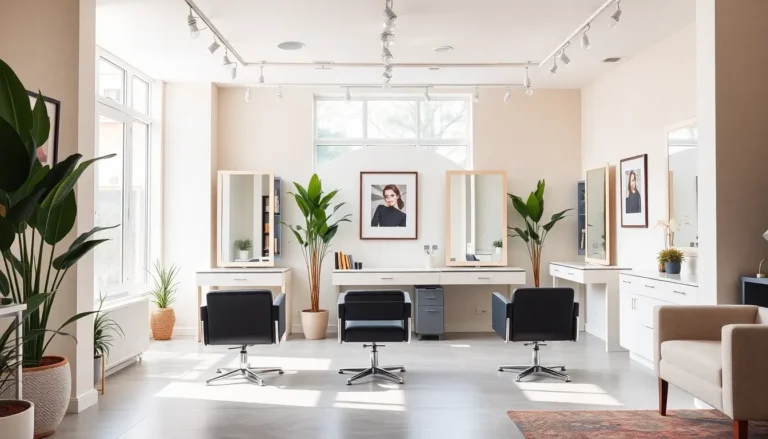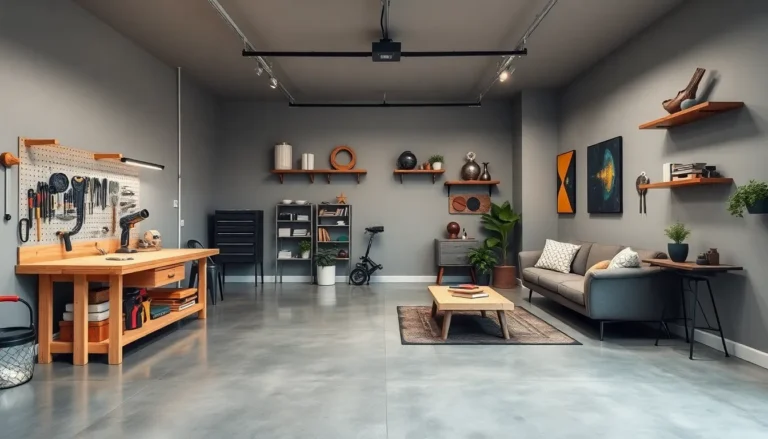Imagine walking into a room that feels alive, where every corner whispers tranquility and every leaf dances in the sunlight. That’s the magic of interior plant styling. It’s not just about plopping a fern in the corner and calling it a day; it’s an art form that can transform any space from drab to fab faster than you can say “photosynthesis.”
Table of Contents
ToggleUnderstanding Interior Plant Styling
Interior plant styling involves strategically incorporating plants into interior spaces to enhance beauty and create inviting environments. This practice blends aesthetics and functionality, resulting in visually appealing and serene areas.
Definition of Interior Plant Styling
Interior plant styling refers to the art of thoughtfully arranging plants in indoor environments. This approach emphasizes harmonizing plants with furniture, colors, and overall design themes. Effective styling takes into account factors like plant size, shape, and texture to achieve a balanced look. Plant placement plays a crucial role, whether it’s in corners, on shelves, or as centerpieces. Each element comes together to create a cohesive and lively atmosphere.
Importance of Interior Plants in Design
Interior plants significantly influence design by improving air quality and enhancing mood. Studies show that plants can reduce stress levels and increase productivity. When integrated into interior spaces, plants contribute to improved acoustics, thus dampening noise levels. They also act as focal points, drawing attention and adding character to rooms. Those who include greenery in their homes or offices often find an uplifting effect in their daily lives. Overall, plants enhance aesthetic appeal and enrich the experience within any space.
Benefits of Interior Plant Styling
Interior plant styling offers numerous advantages that enhance both aesthetics and well-being. These benefits make plants an essential element in modern interior design.
Aesthetic Appeal
Aesthetic appeal serves as a primary benefit of interior plant styling. Plants add vibrant colors and unique textures, enriching spaces. Varieties such as succulents and ferns create focal points, drawing attention. Strategically placed plants help in balancing furniture and decor, leading to a harmonious environment. Grouping plants by height and shape can accentuate design themes. Additionally, seasonal plant choices keep the decor fresh and engaging.
Health Benefits
Health benefits significantly enhance the value of incorporating plants indoors. Improved air quality results from plants filtering toxins and releasing oxygen. Research shows that indoor plants can reduce stress levels, contributing to a peaceful atmosphere. Enhanced mood often follows the presence of greenery, promoting overall well-being. Productivity tends to increase in plant-filled environments, as they can boost creativity and focus. Furthermore, lower noise levels can be achieved with strategic plant placement, contributing to better acoustics.
Key Elements of Interior Plant Styling
Interior plant styling relies on several essential elements to create a harmonious and inviting atmosphere. Selecting the right plants and appropriate containers significantly influences the overall design.
Choosing the Right Plants
Selecting plants requires considering the unique characteristics of each species. Consider indoor lighting conditions, as some plants thrive in bright light, while others prefer low light. Popular choices include Snake Plants, which tolerate neglect, and pothos, known for air purification. Assess the size and growth habits of plants too; larger specimens create dramatic focal points, while smaller plants can accent tighter spaces. Native and resilient plants often adapt better to indoor environments, promoting longevity in styling.
Selecting Appropriate Containers
Choosing containers plays a key role in plant styling. Opt for materials that complement room decor, such as ceramic for a modern look or woven baskets for a rustic feel. Container size matters; ensure pots provide adequate room for root growth without overwhelming the space. Drainage holes are crucial for plant health, allowing excess water to escape. Incorporate colors that enhance the plants’ natural hues, adding visual interest and depth to the arrangement.
Techniques for Effective Plant Placement
Effective plant placement involves understanding the unique needs of plants and arranging them to create a cohesive look. Utilizing the right techniques increases the impact of interior plant styling.
Understanding Light Requirements
Understanding light requirements is crucial for plant health and placement. Different species thrive in varying light conditions, such as low light, indirect light, and direct sunlight. Snake plants and pothos flourish in low-light areas, making them ideal for corners or shaded spaces. In contrast, succulents and cacti prefer bright, indirect light and should be placed near windows. Assessing the natural light in a space helps ensure that plants receive adequate exposure. Choosing the right location based on these requirements promotes growth and vibrant foliage.
Arranging Plants for Visual Balance
Arranging plants for visual balance contributes significantly to the overall design of a room. Grouping plants of varying heights creates a dynamic display, enhancing visual interest. Taller plants, like fiddle leaf figs, serve as focal points, while shorter plants, such as ferns and small succulents, can fill gaps and provide depth. Alternating plant textures, colors, and sizes fosters harmony within the arrangement. Utilizing plant stands and shelves helps elevate certain species, adding layers to the layout. Creating these layers guides the eye and enhances the space’s aesthetic appeal.
Embracing interior plant styling can truly elevate any living or working space. By thoughtfully incorporating plants, individuals can create an inviting atmosphere that not only enhances aesthetics but also promotes well-being. The right plants and containers, combined with strategic placement, can transform a room into a serene sanctuary.
As people become more aware of the benefits of greenery indoors, the art of plant styling continues to gain popularity. Whether it’s improving air quality or boosting mood, the impact of plants is undeniable. With a little creativity and attention to detail, anyone can master the art of interior plant styling and enjoy the myriad advantages it brings.






